I managed to commit a cardinal photography sin back in 2019. For the first time I can remember – certainly since I’ve been running this site and taking my hobby of photography seriously – I managed to bring my camera with me without any SD cards at all. Not even one in the camera. I had left my large capacity main card in the back of my computer after downloading some images, and for whatever reason my spare cards were all in my other bag. Considering that one of the main reasons I was visiting the Bluebell Railway was to take photographs (the other being to keep our niece and nephew, who we were babysitting for the weekend, occupied), this was potentially a disaster.
However, you are currently reading this post, which suggests that I did manage to photograph something – and despite recently posting a big batch of photos from my phone, the answer wasn’t just using my phone instead.
Luckily, on a whim almost literally as I was walking out the door, I had grabbed my little point-and-shoot Sony camera and thrown it in my bag. I inherited a Sony DSC-RX100 IV from my late father-in-law, and at that stage I had only played about with it a little, and wasn’t feeling particularly comfortable using it fully.
Unfortunately it had images on it I hadn’t downloaded, so borrowing its card for my DSLR wasn’t an option, so I ended up shooting with it, and it alone, for the whole day. Aside from the fact I was left carrying an otherwise useless camera bag full of kit with me, this was a blessing in disguise, as it forced me into using a camera I hadn’t really engaged with properly at that point, and probably wouldn’t have done with my DSLR by my side.
The Bluebell Railway is conveniently located only about a 15 minute drive fom our new house, one of the many lovely things about the new area we call home. It’s also one of the oldest heritage railways in the UK, opening up in the early 1960s (at least according to Wikipedia).
When we arrived there was already a train on steam, taking on water just down the track from the platforms and a usefully positioned footbridge.

Under the footbridge was another set of carriages, which I felt would benefit from a monochrome treatment in order to bring out the textures of its roof.
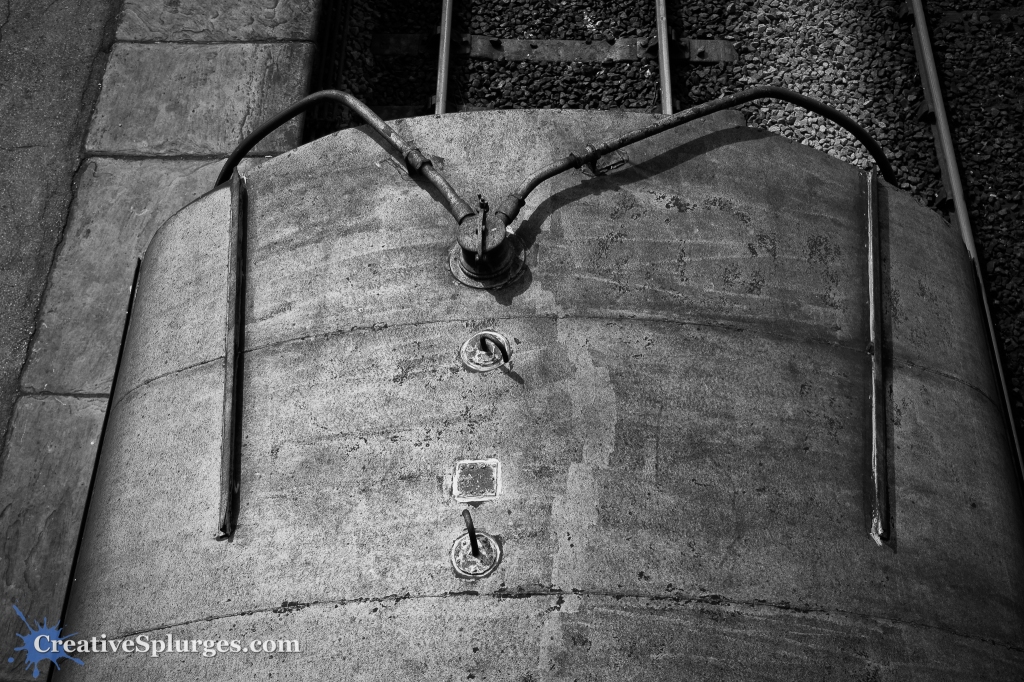
These carriages, it turned out, were part of a silver dining service, by the looks of it with all the trimmings.
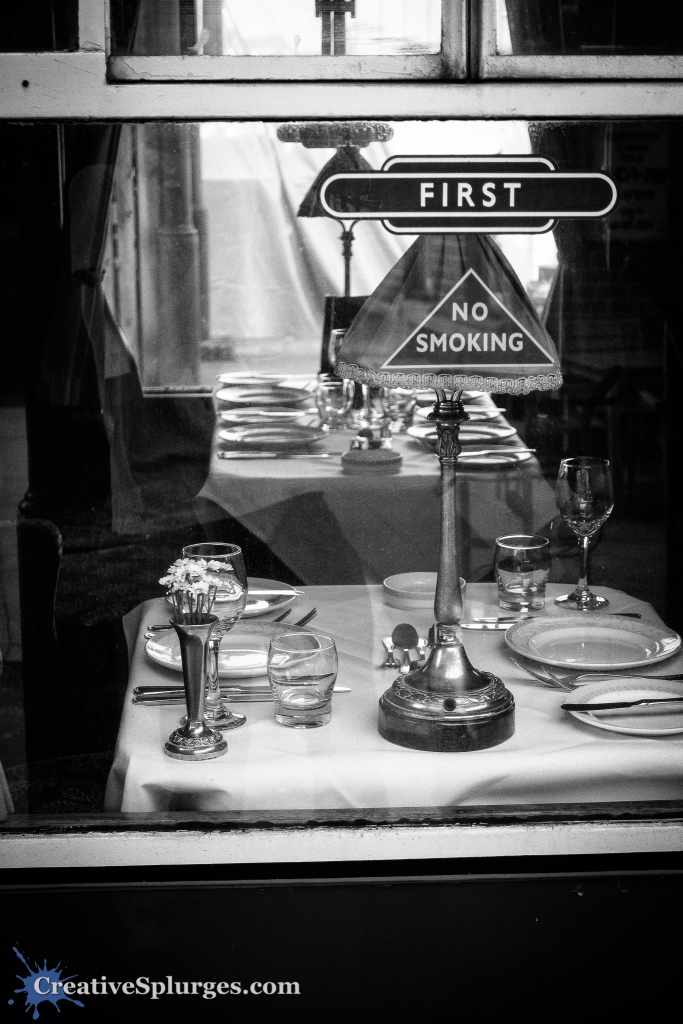
As is often the case at heritage railway stations, there were plenty of textured items to photograph, and as has become my style I have put it through a monochrome process to bring out the details.

And clearly I wasn’t the only photographer there that day.


I was still figuring out the camera, and shooting a black object in bright sunlight is often a challenge for most cameras, as depending on what metering mode you’ve got set they can often overexpose for the dark item you’re pointing the camera at, in spite of its surroundings. Luckily for most of them I was able to recover the details, apart from in some areas such as the white steam.

The train pulled in, but we decided we weren’t going to catch it just yet, instead planning on going around the nearby engine shed that was full of old engines (apparently the largest collection of steam locomotives in the UK outside of the National Rail Museum, according to the same Wikipedia article).
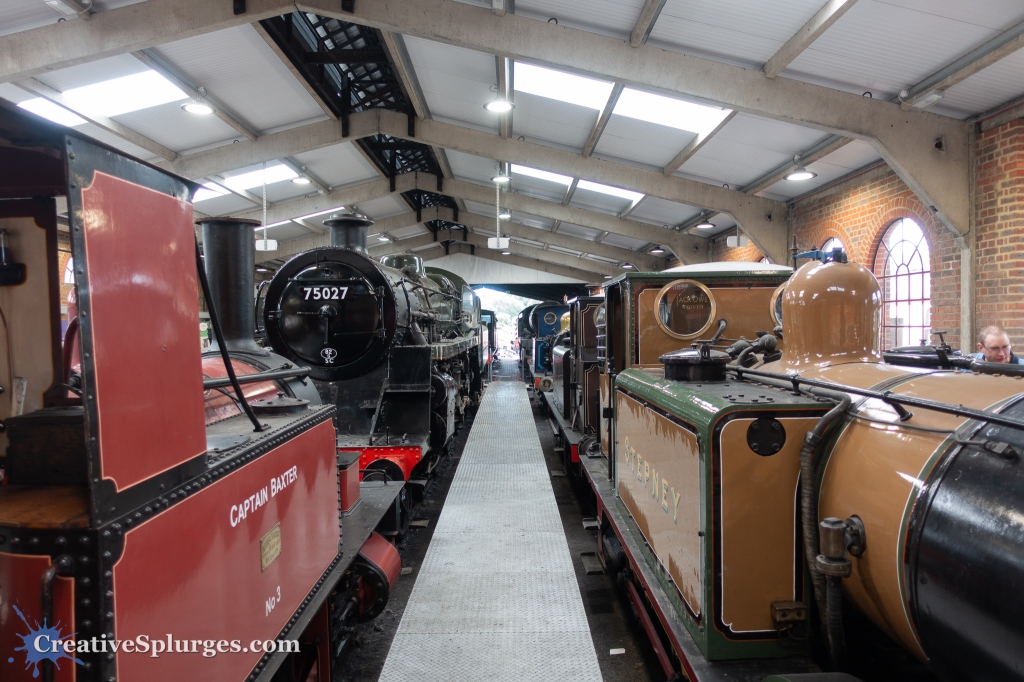
The trains were in various states of repair, but being out-of-service meant you could get real close to them, and as we were able to partly walk around at track level (without a platform) I could also get some interesting and unusual angles.

Some trains had walkways all around them, meaning I could also get higher level shots I’d not normally be able to get.
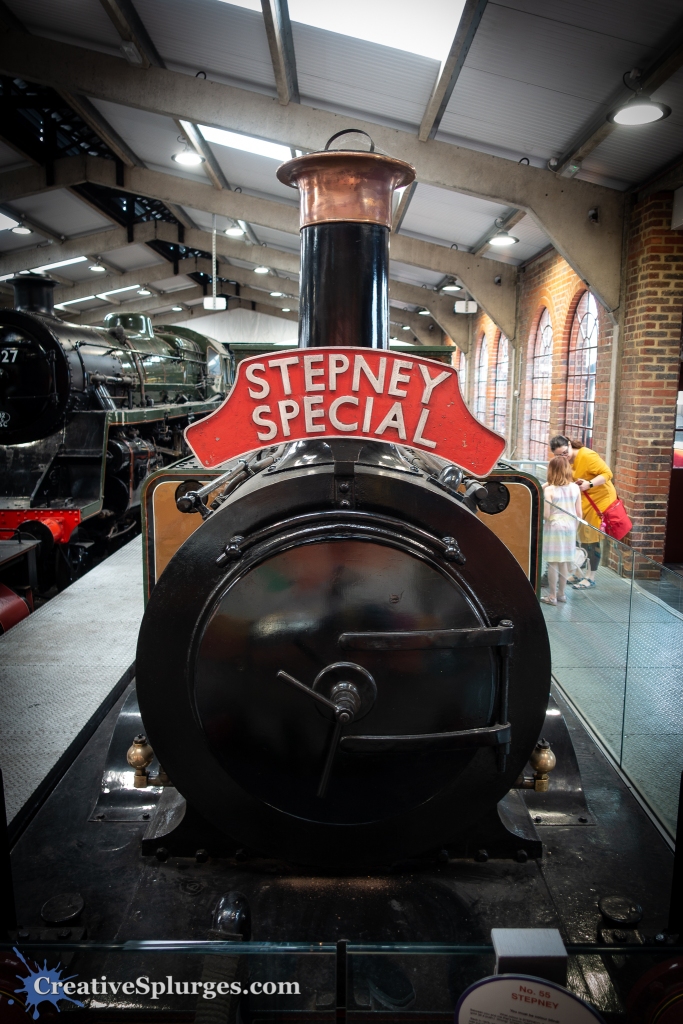

When we were up at platform level, we could get a decent view into the driver cabins (although they were still roped off so we weren’t allowed inside them).
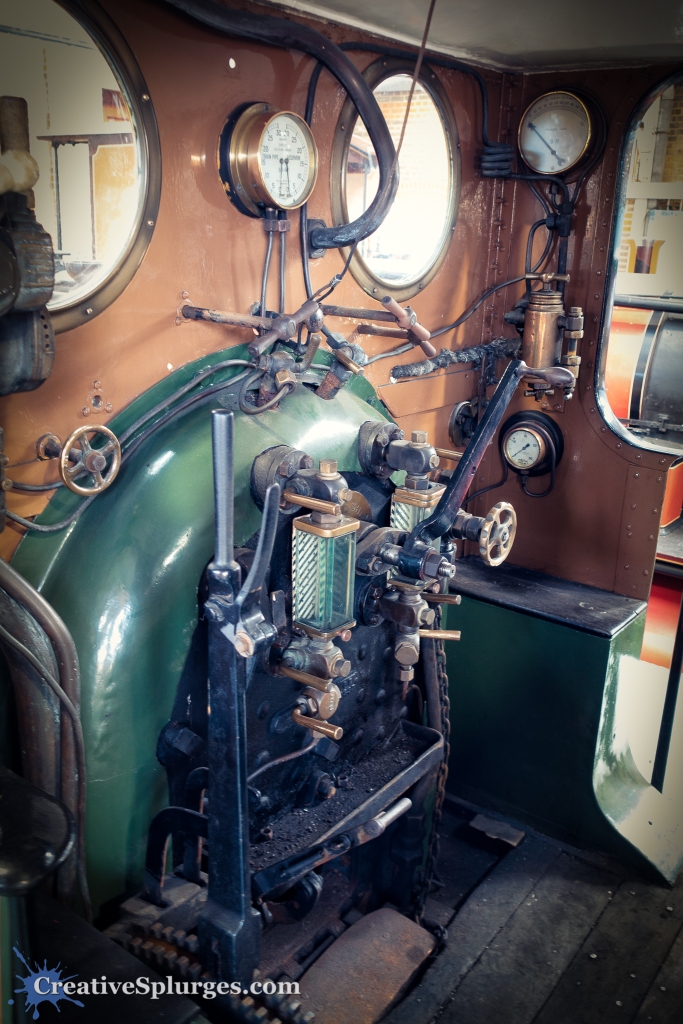
This next one is one of my favourites for reasons which, as ever, are largely unquantifiable.

Ultimately though, it was great to get into positions you’d not be able to get into on an active railway.

Out back of this engine shed was a servicing yard of some sort, with a small number of trains. The first one that caught my eye was a diesel of some sort, which I’ve edited to bring out the solid colours on its end.

There was also a few empty servicing areas, allowing me to shoot the trench thingy the engineers use to access the underside of the trains. By turning this shot monochrome and tweaking the tonal contrast to bring out some of the textures, it could almost be from the 50s or 60s, unless you notice the modern diesel engine on the corner.

So framed out it completes the look.

Back inside the engine shed, there were some interesting angles to be had of some of the colourful elements of the trains.

And more opportunities to get angles of the trains one is not often able to get normally.
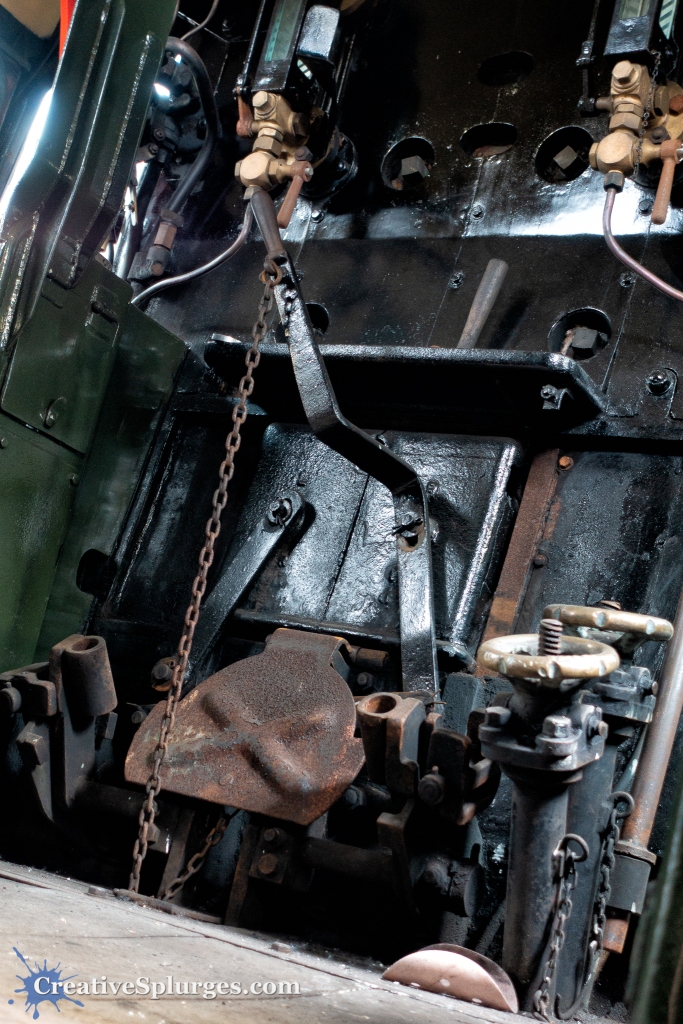

As is often the case at heritage railway stations, there were plenty of old signs about, which despite being well aged are still bold and colourful.

We soon boarded one of the trains to ride the line. I have always loved the view of the world from a train, you get to see an angle of the world you don’t normally get to look at – it’s why I still love to stare out of the window on what was, before lockdown, my daily commute. Sometimes that’s just a fleeting glimpse of someone’s back garden, but for me more often than not it’s seeing some of the operations of the railway that are hidden from view.

The line passes through several stations between Sheffield Park and East Grinstead, which is the full stretch of the line (although East Grinstead is also connected to the National Rail network, making for a potentially interesting backup commute option to get to the office). Those stations, as you’d expect, were also decorated in a suitably old-fashioned way.

Also apparently someone now owes someone else £2.

At East Grinstead, the path out of the station was at track level, giving opportunities similar to the engine shed at getting photographs of trains from a different angle than I’m used to.

Being so low meant we could clearly see the speedometer attached to one of the engine’s wheels.

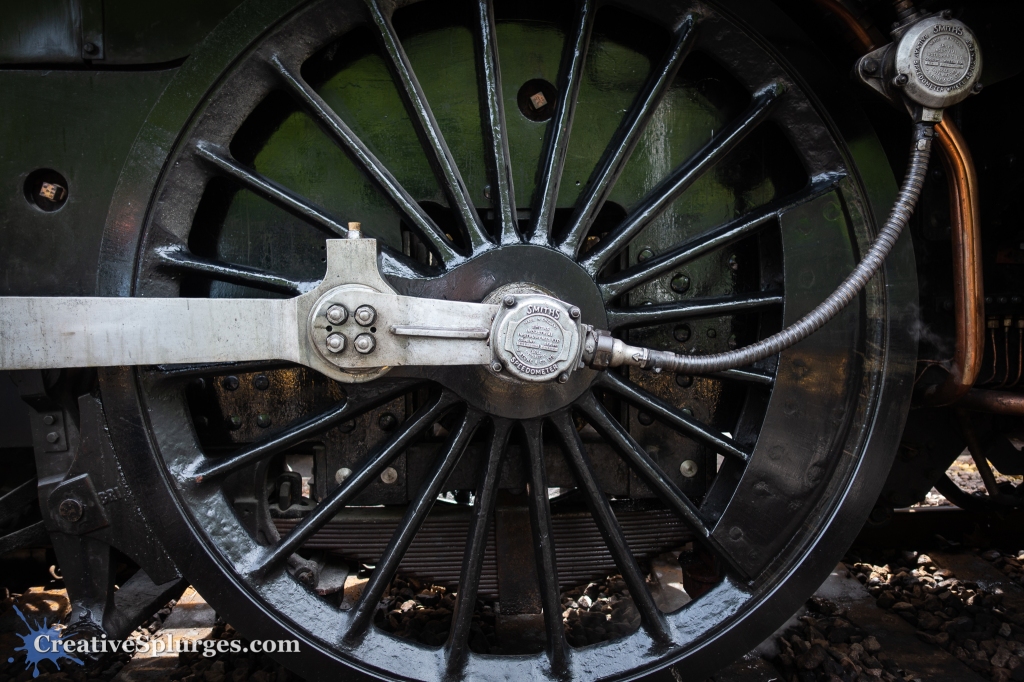
We didn’t do much at East Grinstead, being as we were tasked with the stewardship of two young children who were already getting a bit bored, so we rode the train back, with me still taking photographs along the way. At Kingscote, there is a lovely old-fashioned signal box.

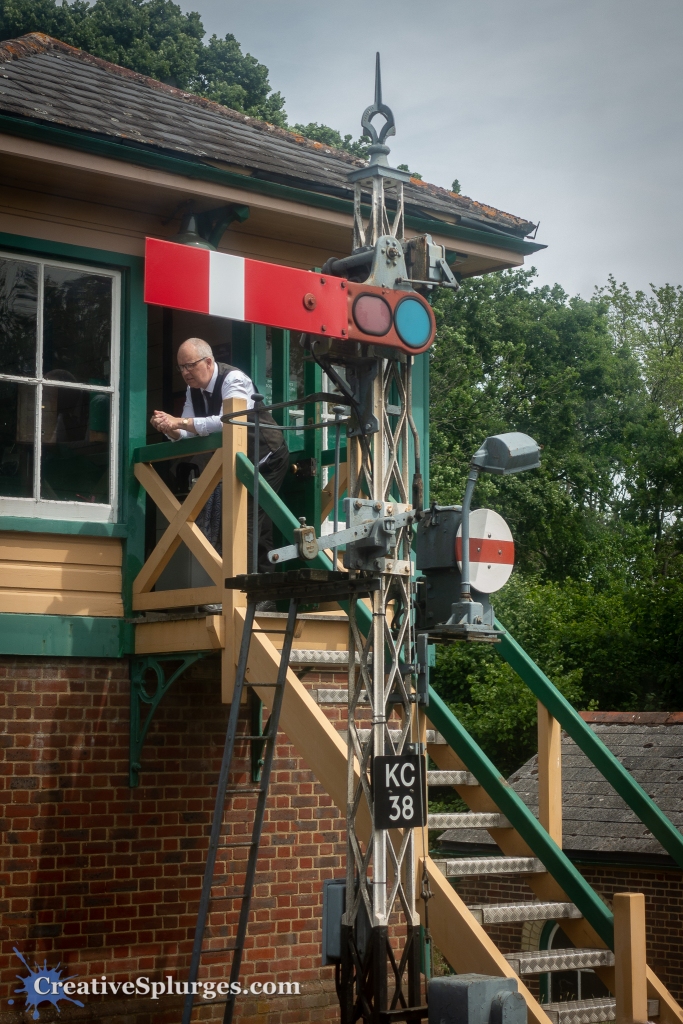
When we got back to Sheffield Park I took some time exploring the area around the station. Much like at East Grinstead, there is a long public area running alongside the track to enable some nice views.







I also took the opportunity to take more images of the station itself.
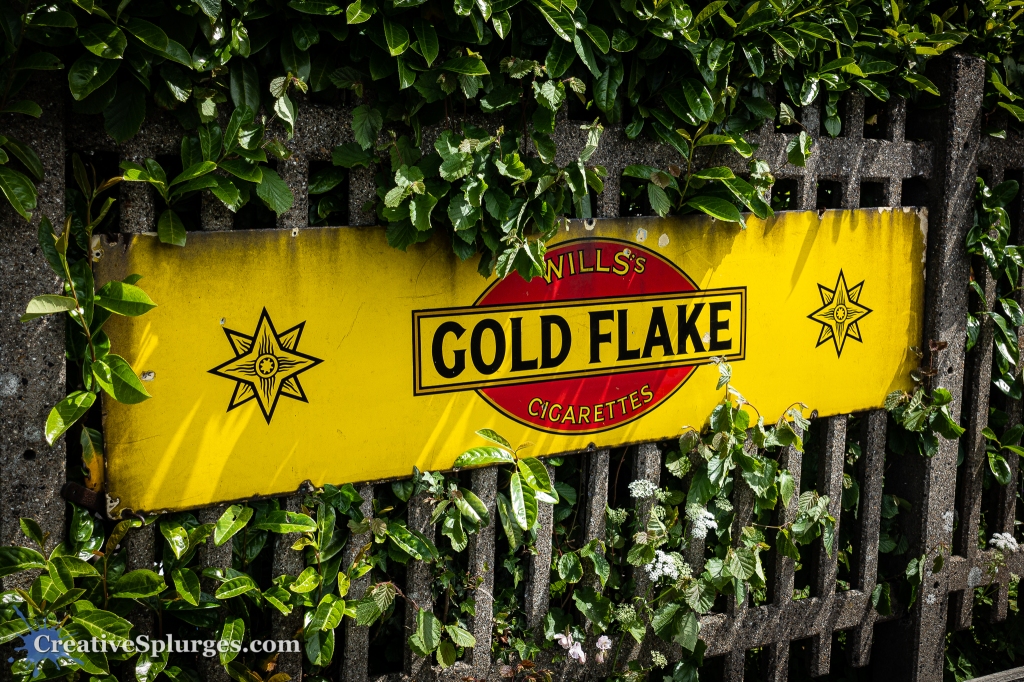

It is amazing to live so close to such a tourist attraction as a heritage railway, something we used to have to travel quite a way for. We haven’t been back yet, the events of my 2019 and the coronavirus lockdown of 2020 has sort of gotten in the way of that. However, the Bluebell Railway offer a safety training course for photographers that will ultimately grant trackside access to take pictures, and that is something I’m seriously considering for the future (when the world opens again).

That was clearly a productive visit – a few keepers there
LikeLike
No serious photographer should ever give up a chance to shoot trains, esp in B&W. Cheers!
LikeLike